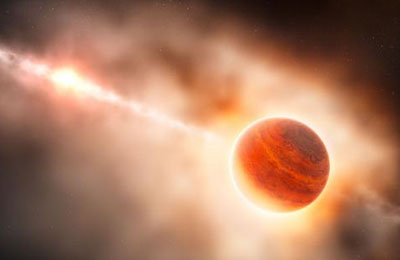
Astronomers spy possible planet in stellar womb
Cape Canaveral, March 3, 2013
Scientists have found what they believe to be a planet-in-the-making that is still gathering material left over from the formation of its parent star.
The object appears as a faint blob nested inside a disk of gas and dust that swirls around a very young star known as HD 100546, located about 335 light years away in the constellation Musca, or The Fly, astronomers report in a paper published on Thursday in the Astrophysical Journal.
Light travels about 299,792 km per second, or about 10 trillion km a year. The embedded object appears to be about the size of Jupiter, although it is about 68 times farther away from its parent star than Earth is from the sun. At that distance, the object takes 360 years to complete one orbit around its star.
Jupiter, by comparison, orbits about five times farther from the sun than Earth and completes an orbit in less than 12 years. Jupiter, the largest planet in the solar system, is more than 300 times the size of Earth.
If confirmed, HD 100546's planet would be the first of more than 800 extra solar planets and more than 2,000 candidate planets found while it was still in the formation phase.
"So far, planet formation has mostly been a topic tackled by computer simulations," lead researcher Sascha Quanz, with ETH Zurich's Institute for Astronomy in Switzerland, said in a statement.
"If our discovery is indeed a forming planet, then for the first time scientists will be able to study the planet-formation process," he said.
Researchers picked out the object after analysing more than 35,000 near-infrared images of the star's disk taken by the European Southern Observatory's Very Large Telescope array in Chile.
Additional observations are needed to rule out that the light source is coming from a background object. The newly found object, known as HD 100546 b, could also be a fully formed planet that was gravitationally elbowed out of a position closer to the star by sibling planets.
There already is evidence HD 100546 b is not alone. Astronomers previously found what is believed to be an extremely large planet orbiting HD 100546 about six times farther away than Earth orbits the sun. The planet, which is in a gap in the star's dust disk, is 10 times closer to its parent star than the newly found object.
"If confirmed, HD100546 b would be a unique laboratory to study the formation process of a new planetary system, with one giant planet currently forming in the disk and a second planet possibly orbiting in the disk gap," the researchers wrote in their paper. – Reuters







